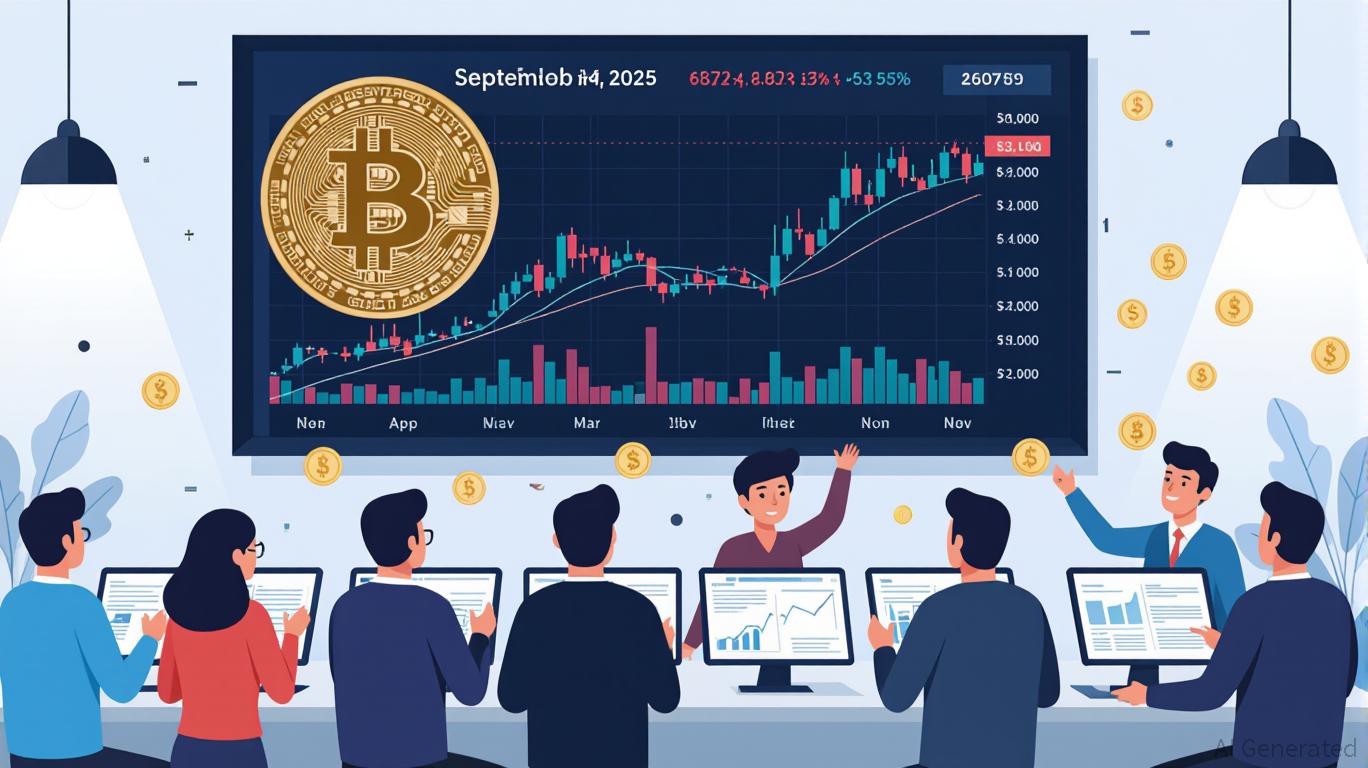AAVE Rises 0.86% as Large Investors Accumulate and Aave Founder Criticizes BoE
- AAVE rose 0.86% in 24 hours to $205.44 amid whale accumulation and regulatory scrutiny, despite 32.98% annual declines. - Major on-chain actors borrowed $180M+ from Aave to purchase 388,615 ETH ($1.32B), leveraging DeFi protocols for ETH accumulation. - Whale strategies maintain 2.1 leverage ratios, while backtests show Aave whale activity correlates weakly with sustained AAVE price gains. - Analysis suggests whale accumulation may signal distribution or liquidity provision rather than bullish price mome
As of November 12, 2025,
Renewed interest in AAVE was fueled by notable whale accumulation and heightened regulatory attention from leading institutions. On November 12, a major on-chain entity borrowed 10 million
Meanwhile, another prominent whale, commonly known as the “66k ETH Borrow Whale,” continued to ramp up its accumulation. Blockchain data shows this whale borrowed an additional $80 million in stablecoins from Aave, transferred the funds to Binance, and exchanged them for 30,549 ETH. This brought the whale’s weekly ETH purchases to 385,706 ETH, worth $1.32 billion. The whale is maintaining a leverage ratio near 2.1, reflecting strong conviction in the long-term outlook for
These whale maneuvers are part of a larger trend where major players utilize Aave’s lending services to finance ETH acquisitions, thereby impacting the broader DeFi landscape. The surge in liquidity and leverage points to a generally optimistic stance among influential market participants.
Backtest Hypothesis
A recent backtest explored how whale accumulation events on Aave relate to subsequent AAVE price movements. The analysis reviewed public news from January 1, 2022, to November 12, 2025, searching for mentions of “Aave whale accumulation” and identified three significant accumulation periods. These periods defined 846 event days, which were then tested using a 30-day holding period and an equal-weight event study approach. Findings indicated that AAVE’s average return after such events did not notably outperform a crypto-market benchmark until day 19, with a distinct negative alpha by day 30. This implies that whale accumulation alone may not reliably predict sustained price gains and could instead point to distribution, market weakness, or liquidity provision.
Disclaimer: The content of this article solely reflects the author's opinion and does not represent the platform in any capacity. This article is not intended to serve as a reference for making investment decisions.
You may also like
Trump’s Wall Street Fundraiser Sparks Renewed Debate Over Deregulation and Regulatory Oversight Following Trade Finance Crisis
- Trump dined with Wall Street leaders amid First Brands' $3B trade finance collapse, exposing non-bank lending risks and triggering calls for stricter oversight. - Jefferies faces scrutiny over $3B in tied debt as its stock fell 19%, while JPMorgan's Dimon warned of systemic gaps in non-bank lending oversight. - Trump's 50-year mortgage proposal sparked debate, with critics fearing "debt for life," while a 42-day government shutdown worsened market uncertainty. - The administration's deregulatory agenda c
Digital Identity, No Data Required: ZK Protocol Secures $9M to Champion a Privacy-Centric Tomorrow
- Self Labs raised $9M in seed funding led by Greenfield Capital and SoftBank, with participation from Web3 leaders like Sreeram Kannan and Sandeep Nailwal. - The ZK-based platform enables privacy-preserving identity verification using zero-knowledge proofs and supports 129 countries' biometric passports and India's Aadhaar system. - A points-based rewards program incentivizes on-chain verification, while integrations with Google, Aave , and Velodrome expand use cases like token distribution and age checks

Bitcoin’s Sharp Decline: Is This a Healthy Correction or an Ominous Signal?
- Bitcoin fell 10.5% in November 2025 amid a $19B derivatives crash, driven by Fed policy uncertainty and U.S.-China trade tensions. - Regulatory shifts and leveraged liquidations (1.6M traders impacted) exposed vulnerabilities in crypto's derivatives-heavy market structure. - Institutional demand persisted (e.g., JPMorgan's 64% ETF stake increase), suggesting long-term adoption despite short-term volatility. - Derivatives recovery may lag until 2026, hinging on Fed rate clarity and inflation trends, with

Bitcoin Leverage Liquidation Spike: Systemic Threats in Crypto Derivatives During Q4 2025 Market Turbulence
- Q4 2025 crypto derivatives saw $20B in liquidations as Bitcoin fell below $100,000, exposing systemic risks from extreme leverage (up to 1,001:1) and interconnected markets. - Platforms like Hyperliquid and Binance faced $500M+ losses in 24 hours due to cascading margin calls, with 78% of perpetual futures volume amplifying volatility through feedback loops. - Regulators scramble to address risks as unregulated leverage, macroeconomic pressures, and geopolitical tensions (e.g., U.S.-China trade wars) inc
